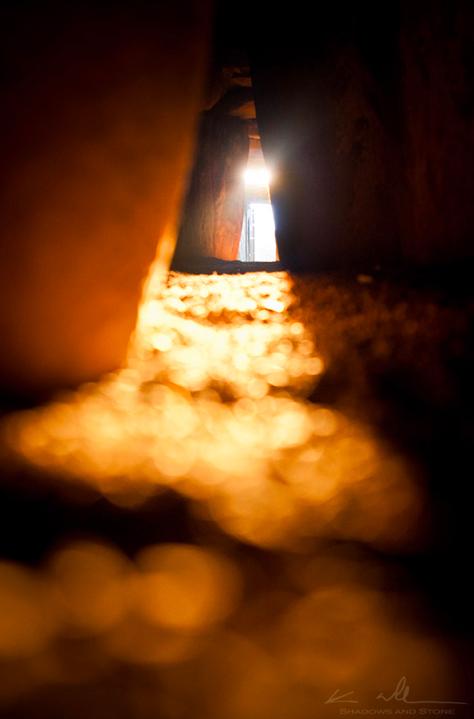A man buried in the inner chamber of Newgrange passage tomb was the product of a union between siblings, according to ancient DNA analysis. He was also more distantly related to people buried at passage tombs up to 150km away, suggesting that a network of related rulers controlled Ireland in the centuries after populations of Neolithic farmers first reached the island from mainland Europe. The find gives us new insight into the last phase of the Stone Age and the beginning of agriculture and settled village life in the area.
Some rumors never die
In the 11th century CE, someone in County Meath, Ireland, finally wrote out a salacious folktale that had been passed down for about 4,000 years. According to the story, an ancient king, who hailed from a tribe of gods, had slept with his sister on the winter solstice as part of a magic ritual to restart the Suns daily cycle and save the world from endless night. The couple supposedly did the deed in one of the countys huge burial mounds, which the locals named Fertae Chuile, or the Hill of Sin.

Today, we know that hill as the Dowth passage tomb, a construction in which buried sections are reached through an entry marked by large stones. Dowth is a close neighbor of the more famous Newgrange passage tomb. And every winter solstice, the sun shines through the stone passage at Newgrange and lights up the innermost burial chamber. And nearly a thousand years after the local legend was first written down, ancient DNA suggests that at least part of the story—the most troubling part, naturally—was actually true.
“The magical solar manipulations in this myth already had scholars questioning how long an oral tradition could survive,” said Trinity College Dublin geneticist Ros Ó Maoldúin, a coauthor on the study. “To now discover a potential prehistoric precedent for the incestuous aspect is extraordinary.”
Maoldúin and her colleagues, led by Trinity geneticist Lara Cassidy, sequenced DNA from the disarticulated bones of a man interred in the chamber at the end of the Newgrange tombs passage. About a quarter of the mans genome consisted of very long stretches of homozygous DNA: DNA where both copies of the genes were the same, instead of the mix-and-match pairs most people inherit from their parents. That strongly suggests that his parents were first-degree relatives—probably brother and sister.
The god-king and his sister
That points to what study coauthor Daniel G. Bradley, also of Trinity College Dublin, described as “a hierarchy so extreme that the only partners worthy of the elite were family members.” Ordinary monarchs dont usually marry their siblings; even the rulers of late 19th century Europe had to settle for first or second cousins to maintain their royal bloodlines. Rulers only tend to marry their siblings in societies where the king is actually considered a god, whose “perceived divinity exempts them from social custom.”
Thats something the pharaohs of ancient Egypt, the kings of pre-colonial Hawaii, and the Inca emperors had in common—and apparently something they shared with the monumental tomb-building rulers of Ireland 5,000 years ago. The winter solstice myth probably helped these rulers support their claims of being gods, and rally the monumental (not sorry) effort it took to move 200,000 tons of rock to build passage tombs like Newgrange.
“Marking the winter solstice was crucial for early farmers, who needed to know when the days would start to get longer,” wrote archaeologist Alison Sheridan, of National Museums Scotland, in an essay commenting on the genetic study. “Perhaps this elite claimed to have divine power by controlling the Suns movement.”

Prehistoric Habsburgs
And the god-king buried in the Newgrange passage tomb was apparently part of a well-connected class of such rulers who held sway over the entire island of Ireland for at least a thousand years. Cassidy and her colleagues sequenced 43 other genomes from Neolithic sites around the island. It turned out that the Newgrange man was related to people buried in at least three other large passage tombs, including two located 150 km (93 miles) west of Newgrange.
According to their genomes, the man buried in Newgrange was a sixth-degree relative of people buried at Carrowmore and Carrowkeel passage tombs in County Sligo and the Millin Bay Megalith on Irelands northeast coast. Sixth-degree relatives could be second cousins, first cousins twice removed, great-great-great-great grandchildren/parents, or great-great-great uncles or aunts (or nieces or nephews). Like a prehistoric version of the Habsburgs, this extended group of relatives seems to have ruled Ireland and maintained their connected dynasties for centuries.
These genetic clues to Irelands ancient ruling families shed a lot of light on the political and social structure of the people who built the megalithic tombs that dot the AtlanRead More – Source
[contf] [contfnew] 
arstechnica
[contfnewc] [contfnewc]







